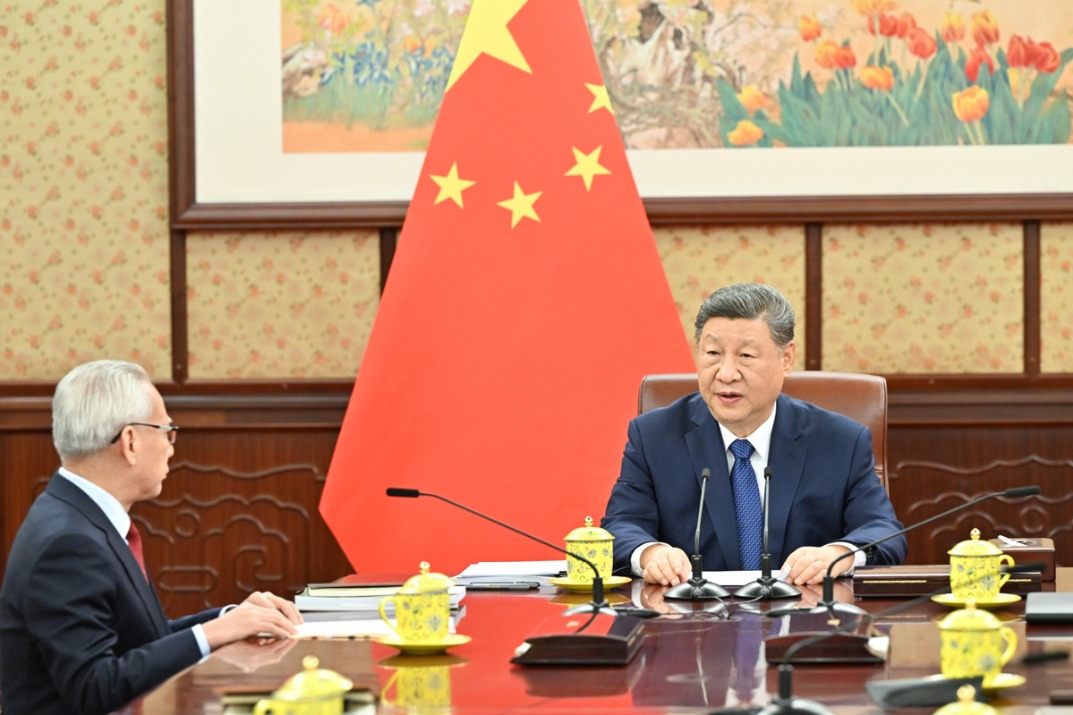Birth of the Jade Rabbit

|
The Yutu rover working on the moon. Provided to China Daily |
| Cartoon depictions of moon vehicles that resemble Yutu. Provided to China Daily |
The development of China's first moon rover could mark the start of a 20-year golden age for space exploration, Scientists say
When young Chinese space scientists began designing the country's first moon rover, Yutu, or Jade Rabbit, their first drawings could well have been taken from a textbook of elementary geometry.
Would it be a four-wheeled, six-wheeled or eight-wheeled rover with rectangular, triangular or trapezoid shaped solar panels?
What emerged was the condensed wisdom and diligence of hundreds of researchers who spent a decade in its design and production.
In July 2004, Jia Yang, a researcher with the China Academy of Space Technology, drew three overlapping circles, representing spacecraft, vehicle and robot.
"The moon rover concept was at the intersection of the three circles. The biggest difference between a moon rover and other spacecraft was that it would interact with the moon's surface," Jia says.
At the start of China's Chang'e lunar exploration program in 2004, more than a dozen research institutes and universities vied to take part in the development of the lunar rover.
They had many designs: some moved fast; some had deft robotic arms; others could overcome big obstacles.
Eventually, more than 100 institutes and research agencies joined the project, and the lunar rover ended up as a combination of technologies from various sources, says Jia, who became deputy chief designer of the Chang'e-3 lunar probe in 2008.
"We studied many foreign documents to understand the basic research. But when we met difficulties, we could only rely on ourselves," Jia says.
According to a fellow deputy chief designer, Zhang Yuhua, of Shanghai Academy of Spaceflight Technology, China and the United States did not work together on lunar exploration.
The initial blueprint featured a rover with a cube-like body, which some critics likened to an ice-cream vendor's trolley.
The designers came up with many different shapes, but chose the most feasible in terms of technology.
"Since we had many restrictions, such as its weight, we kept the design simple to meet all the functional demands," Jia says.
"Maybe some thought the moon rover was not pretty, but it was perfect in our eyes because it met all the technological requirements."
The different design stages reflected its evolution.

The rover's body transformed from that box to a complicated shape enveloped by cooling panels.
The wheels were connected in different ways, the previously folding solar panels on each side became one foldable structure with one fixed, and the antenna and the pole holding the cameras were combined.
Experts and designers pondered every conceivable question, but one that preoccupied them more than most was whether the rover could right itself if it tipped over.
"After many trials, our conclusion was no, it couldn't. If the delicate equipment on the rover, as well as the solar panels, were covered with lunar soil, they could not work," Jia says.
"So we could only consider how to keep the rover from overturning in the first place."
Animated discussion followed. After deciding on a six-wheel rover, designers looked for months at two plans to connect the three wheels on each side.
Plan A had only a strong forward movement, while computer simulations showed plan B had a better ability to move in reverse.
Researchers imagined two basic scenarios: when the rover crossed a small obstacle, and then when it faced an insurmountable one.
If it hit the second, it had to retreat. If they chose plan A, the rover could have problems too. But eventually, plan B was chosen.
Long before the launch of the lunar probe, Jade Rabbit's weight also troubled developers.
Designing the prototype, researchers were required to keep its weight within 120 kilograms, due to the rocket's capacity.
The rovers developed by the former Soviet Union were more than 700 kg, while those of the United States were more than 200 kg.
"At the beginning, many veteran specialists thought it was impossible to make such a light vehicle. And even if we made it, would it be unreliable, they asked," Zhang Yuhua says.
They tried everything to reduce its weight: The antenna and the pole holding the cameras were combined; they changed from two foldable solar panels to one fixed and one folding, which took off 500 grams; several instruments were replaced with integrated electronic devices, cutting another 20 kg, and even the amount of soldering and the number of screws were discussed and tested.
Today's Top News
- Opening of new gateway can help foster global economic and trade cooperation
- The farmer, the snake and Japan's memory hole
- Crossing a milestone in the journey called Sinology
- China-Russia media forum held in Beijing
- Where mobility will drive China and the West
- HK community strongly supports Lai's conviction
































